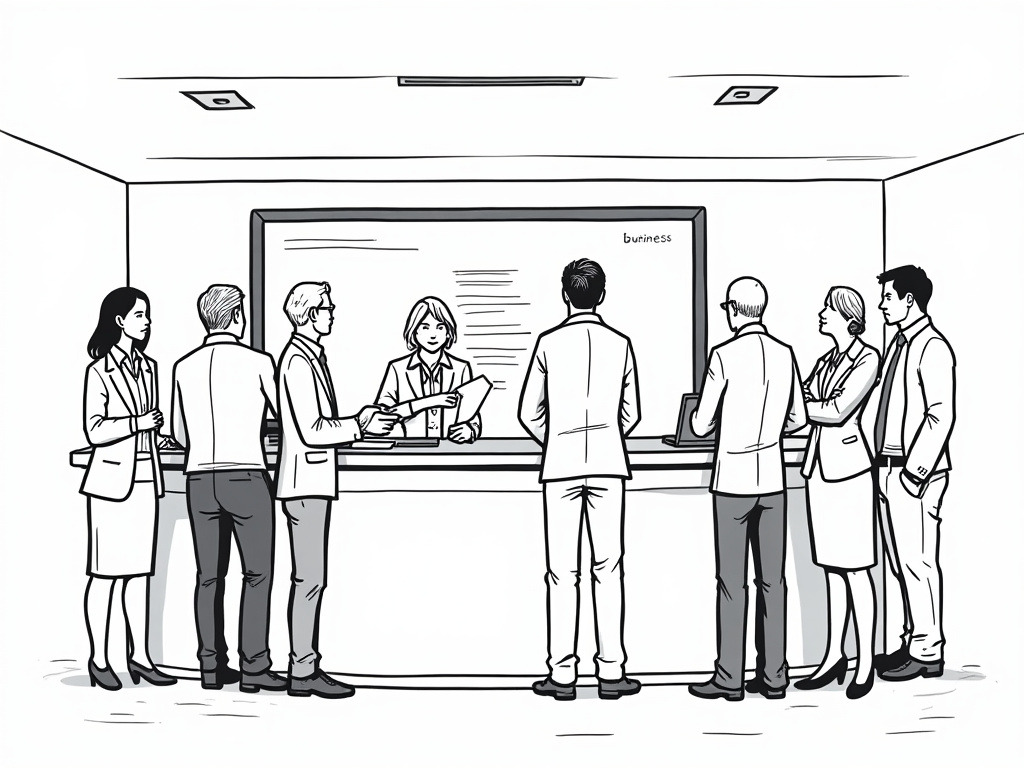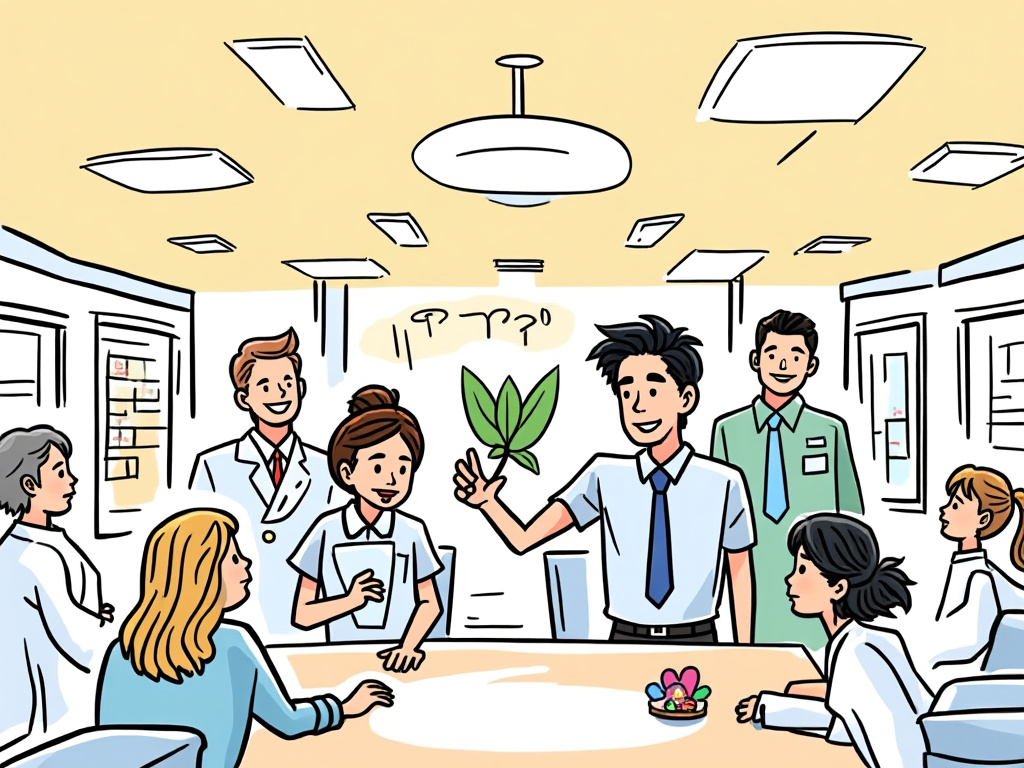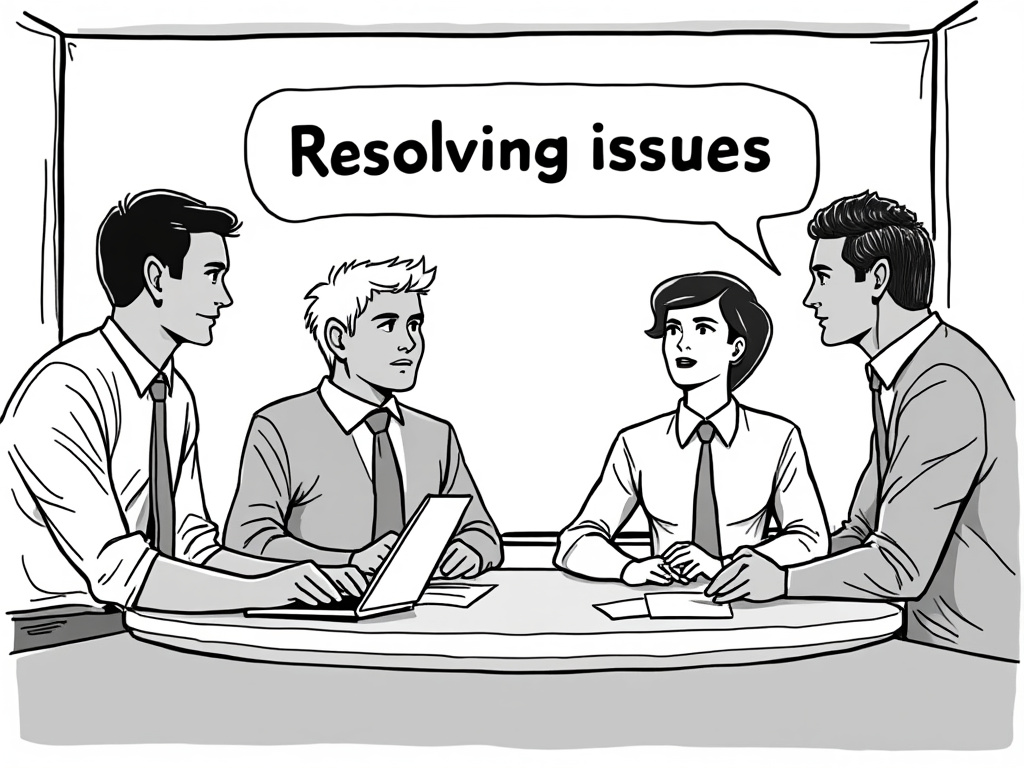
Ajman Education Authority: Navigating the Educational Landscape in Ajman
Reading time: 16 minutes
Table of Contents
- Introduction to Ajman Education Authority
- Historical Development and Governance Structure
- Strategic Vision and Educational Framework
- Regulatory Functions and Quality Assurance
- Curriculum Standards and Implementation
- Teacher Development and Professional Growth
- Innovation and Technology Integration
- Addressing Educational Challenges in Ajman
- Case Studies of Educational Excellence
- Charting the Educational Horizon: Future Directions
- Frequently Asked Questions
Introduction to Ajman Education Authority
Ever found yourself wondering who ensures educational quality in Ajman’s schools? Or perhaps you’re curious about the regulatory framework that guides educational institutions in this dynamic emirate? You’re not alone in seeking clarity about the Ajman Education Authority (AEA).
The AEA stands as the cornerstone of educational governance in Ajman, the smallest emirate in the UAE but one with ambitious educational aspirations. Established to transform Ajman’s educational landscape, the Authority serves as both architect and guardian of the emirate’s educational future.
Let’s cut to the chase: Understanding the AEA isn’t just academic curiosity—it’s essential knowledge for parents, educators, investors, and anyone with a stake in Ajman’s developmental trajectory. Whether you’re navigating school choices, considering an educational career, or analyzing Ajman’s human capital development, comprehending the AEA’s role provides critical context.
Consider this: In a region where educational quality varies significantly and regulatory frameworks continue to evolve, the AEA represents Ajman’s commitment to educational excellence and alignment with broader UAE educational visions.
Historical Development and Governance Structure
The Ajman Education Authority’s journey reflects the emirate’s broader evolution from traditional educational approaches to a modern, globally-competitive educational ecosystem. Prior to formalized educational governance, Ajman, like many Gulf regions, relied primarily on religious schools (madrasas) and informal educational arrangements.
Formation and Early Development
The Authority’s formation came as part of Ajman’s strategic response to the UAE’s federal emphasis on educational development as a national priority. While younger than educational authorities in Abu Dhabi and Dubai, the AEA has rapidly developed sophisticated governance mechanisms tailored to Ajman’s specific context.
According to Dr. Amina Al Shamsi, Director of Educational Quality at the AEA, “Our relatively recent formation allowed us to learn from both successes and challenges faced by other emirates, enabling us to design governance systems that balance regulatory oversight with the flexibility needed for institutional innovation.”
Current Governance Framework
Today, the AEA operates through a multi-tiered governance structure:
- Executive Council: Provides high-level strategic direction and aligns educational policies with Ajman’s broader development goals
- Director General’s Office: Oversees implementation of policies and maintains communication with federal educational authorities
- Operational Departments: Include Licensing and Accreditation, Curriculum Development, Teacher Qualification, Student Assessment, and School Operations
- Advisory Councils: Comprising educators, parents, industry representatives, and community leaders who provide stakeholder input
This structure enables the AEA to maintain regulatory consistency while adapting to Ajman’s rapidly changing educational needs. The Authority maintains a collaborative relationship with the UAE Ministry of Education, functioning as the local implementation arm for federal educational policies while developing Ajman-specific initiatives.
Strategic Vision and Educational Framework
The AEA doesn’t simply regulate—it envisions. The Authority’s strategic framework centers on transforming Ajman into an educational hub that combines global best practices with cultural relevance and future-focused innovation.
Core Strategic Pillars
The AEA’s vision rests on five interconnected strategic pillars:
- Educational Excellence: Establishing and maintaining world-class standards across all educational institutions
- Innovation and Future-Readiness: Preparing students for the challenges of the Fourth Industrial Revolution
- Emiratization and Cultural Identity: Strengthening national identity while embracing global citizenship
- Inclusive Education: Ensuring educational opportunities for all students regardless of background or ability
- Community and Industry Partnership: Fostering collaboration between educational institutions and key stakeholders
This vision translates into tangible KPIs that guide the Authority’s work. For example, the AEA aims to achieve 95% student satisfaction rates, increase Emirati representation in teaching staff to 30% by 2025, and ensure all schools achieve at least a “Good” rating in quality assessments.
As Sheikh Abdullah bin Zayed Al Nahyan, UAE Minister of Foreign Affairs and International Cooperation, noted during a 2022 visit to Ajman, “The educational vision developed by Ajman exemplifies how smaller emirates can create focused, nimble educational frameworks that respond effectively to both local needs and national priorities.”
Regulatory Functions and Quality Assurance
Wondering about the nuts and bolts of how the AEA actually ensures educational quality? Let’s examine the regulatory machinery that keeps Ajman’s educational institutions accountable and continuously improving.
Licensing and Accreditation Processes
The AEA maintains rigorous protocols for institutional licensing that include:
- Initial feasibility assessment and facility requirements
- Curriculum review and alignment verification
- Financial viability and sustainability evaluation
- Leadership team qualification assessment
- Operational systems and safety protocols review
These processes aren’t mere bureaucratic hurdles—they represent critical quality gates. A private school investor who recently navigated this process shared: “Initially, we viewed the licensing requirements as obstacles, but working through them actually strengthened our educational model and operational planning. The process was demanding but ultimately beneficial.”
Inspection and Quality Monitoring
The Authority implements a comprehensive quality assurance system including:
- Regular scheduled inspections (typically bi-annual)
- Unannounced spot inspections focusing on specific operational aspects
- Data-driven performance monitoring through centralized reporting systems
- Student outcome tracking and trend analysis
- Stakeholder satisfaction surveys and feedback analysis
Schools receive ratings on a six-point scale: Outstanding, Very Good, Good, Acceptable, Weak, and Very Weak. These assessments evaluate performance across leadership, teaching quality, student achievement, curriculum implementation, and support systems.
The real impact becomes evident when examining performance trends. Since implementing this framework in 2018, the percentage of Ajman schools rated “Good” or above has increased from 47% to 73% in 2023—tangible evidence of the regulatory approach’s effectiveness.
School Rating Distribution in Ajman (2018-2023)
8%
24%
41%
19%
8%
Curriculum Standards and Implementation
Ajman’s educational landscape features diverse curricular approaches, from UAE national curriculum to various international frameworks. How does the AEA maintain standards across this diversity while fostering innovation?
Curriculum Approval and Oversight
The AEA takes a balanced approach to curriculum governance, recognizing that different curricula serve diverse student populations. The Authority approves and oversees several curriculum frameworks:
| Curriculum Type | Percentage of Schools | Regulatory Oversight Level | Local Adaptation Requirements | Performance Metrics (2023) |
|---|---|---|---|---|
| UAE National Curriculum | 42% | Comprehensive | Standard implementation | 78% meeting/exceeding targets |
| British Curriculum | 28% | Moderate | UAE social studies/Arabic integration | 85% meeting/exceeding targets |
| American Curriculum | 18% | Moderate | UAE social studies/Arabic integration | 82% meeting/exceeding targets |
| Indian Curriculum | 9% | Moderate | UAE social studies/Arabic integration | 77% meeting/exceeding targets |
| Other International | 3% | Enhanced | Comprehensive localization review | 73% meeting/exceeding targets |
Curriculum oversight includes both content review and implementation monitoring. As Mohammed Al Dhaheri, Director of Curriculum at the AEA explains: “Our approach isn’t about standardizing all curricula, but ensuring each curriculum delivers its intended outcomes while incorporating essential local elements. We monitor implementation quality through classroom observations, student outcome analysis, and regular curriculum reviews.”
Balancing Local and Global Content
A distinctive aspect of the AEA’s approach is its emphasis on cultural relevance alongside global standards. All schools, regardless of curriculum, must incorporate UAE heritage, Arabic language (at appropriate levels), Islamic studies (for Muslim students), and moral education components.
This balance creates a unique educational identity for Ajman’s schools. The principal of an international school in Ajman notes: “The AEA’s requirements initially seemed challenging to incorporate into our established curriculum. However, the integration actually enriched our program, giving students stronger connections to their local context while maintaining international standards.”
Teacher Development and Professional Growth
The AEA recognizes that educational quality ultimately depends on teacher quality. The Authority has developed comprehensive systems for teacher licensing, professional development, and performance evaluation.
Teacher Qualification and Licensing
Ajman implements the UAE Teacher Licensing System (TLS) while adding emirate-specific components. This system ensures that all teachers meet minimum qualification standards through:
- Credential verification and educational background assessment
- Subject matter knowledge testing
- Pedagogical competency evaluation
- Professional ethics understanding
- Arabic language proficiency requirements (differentiated by subject)
The licensing process serves as a quality filter and professional development diagnostic. Teachers who don’t initially meet standards receive targeted development plans and provisional licensing pending full qualification.
Continuous Professional Development
Beyond licensing, the AEA coordinates a robust professional development ecosystem that includes:
- The Ajman Teacher Academy offering structured courses and workshops
- School-based professional learning communities
- Peer observation and coaching networks
- Digital learning platforms for self-directed development
- Leadership pipeline programs for career advancement
A particularly innovative initiative is the “Teach Forward Ajman” program, which identifies high-potential Emirati graduates and provides accelerated teacher preparation, mentoring, and placement in Ajman schools. This program addresses both teacher quality and Emiratization goals simultaneously.
Aisha Al Nuaimi, an Emirati mathematics teacher who participated in the program, shares: “The comprehensive support from theory to practice made my transition into teaching seamless. The ongoing mentoring ensured I continued growing professionally after placement. This approach has created a community of Emirati educators committed to excellence.”
Innovation and Technology Integration
The AEA has positioned educational innovation and technology integration as central to Ajman’s educational future, particularly following the accelerated digital transformation catalyzed by the COVID-19 pandemic.
EdTech Strategy and Implementation
The Authority’s approach to educational technology extends beyond hardware provision to comprehensive digital transformation. Key elements include:
- The Ajman Digital Learning Platform integrating curriculum resources, assessment tools, and learning analytics
- Smart infrastructure standards for all new and renovated school facilities
- Technology competency frameworks for educators at different career stages
- Data security and privacy protocols for educational technology implementation
- Structured evaluation processes for technology impact on learning outcomes
Rather than mandating specific technologies, the AEA establishes standards and outcomes while allowing schools to select compatible solutions. This approach encourages innovation while ensuring system-wide compatibility and data integration.
Innovation Incubation and Research
Beyond technology, the AEA fosters broader educational innovation through:
- The Ajman Education Innovation Lab providing spaces for educational experimentation
- Annual innovation grants for teacher and school-led initiatives
- Research partnerships with universities to evaluate emerging educational approaches
- Student innovation programs developing future-ready skills
- Innovation showcases highlighting successful practices across the emirate
A notable example is the “Future Classrooms Initiative,” where selected schools receive resources to redesign learning spaces and pedagogical approaches. These schools serve as test beds for innovations that, when proven effective, are scaled across the system.
As Dr. Fatima Al Mehairi, Innovation Director at the AEA, explains: “Our role is to create conditions where educational innovation thrives while ensuring innovations ultimately serve our core purpose of improving student learning. We balance encouraging experimentation with demanding evidence of impact.”
Addressing Educational Challenges in Ajman
Despite significant progress, Ajman’s educational landscape faces distinctive challenges that the AEA actively addresses through targeted initiatives and strategic partnerships.
Infrastructure and Capacity Development
As Ajman’s population grows, educational infrastructure demands increase correspondingly. The AEA coordinates capacity planning through:
- Demographic forecasting to identify future educational needs
- Public-private partnerships to expand educational offerings
- Land allocation programs for educational development
- Design standards ensuring new facilities meet modern educational requirements
- Retrofit programs upgrading existing educational facilities
The Authority’s “School Expansion Roadmap 2025” outlines specific development targets, including adding 12,000 student seats through a combination of new schools and facility expansions. This planning prevents the infrastructure limitations that have challenged other rapidly growing UAE regions.
Affordability and Educational Quality Balance
One of Ajman’s most significant educational challenges involves balancing affordability with quality. The emirate serves diverse socioeconomic populations, including many middle and lower-income families seeking quality education within budget constraints.
The AEA addresses this challenge through several mechanisms:
- Tiered fee frameworks matching cost structures to service levels
- Targeted scholarship programs for high-potential students from lower-income backgrounds
- Efficiency incentives helping schools reduce costs without compromising quality
- Public school quality enhancement initiatives
- Performance-based incentives for schools serving lower-income communities
A fascinating case study is the “Quality-Value Schools Initiative” where the AEA identified schools delivering strong educational outcomes at moderate price points and analyzed their operational models. These insights were then shared across the system, helping other schools optimize their quality-cost equation.
Ahmad Rashid, a parent of three students in Ajman schools, notes: “What’s distinctive about Ajman is how they’ve created pathways to quality education at different price points. We found excellent schools within our budget range, something our friends in other emirates struggle with.”
Case Studies of Educational Excellence
To truly understand the AEA’s impact, let’s examine two case studies demonstrating how the Authority’s frameworks translate into educational excellence.
Case Study 1: Al Hikma School’s Transformation Journey
Al Hikma School, a mid-sized private institution offering the UAE National Curriculum, demonstrates how the AEA’s regulatory framework can drive institutional improvement. In 2019, the school received a “Weak” rating with particular concerns around teaching quality, leadership, and student outcomes.
Rather than simply imposing sanctions, the AEA implemented a comprehensive support approach:
- Diagnostic Deep-Dive: A thorough analysis identified specific improvement areas and root causes
- Improvement Planning: AEA specialists helped develop a targeted three-year improvement plan
- Leadership Development: The school leadership team received specialized coaching
- Teacher Support: Intensive professional development addressed instructional quality gaps
- Progress Monitoring: Regular check-ins ensured continuous improvement
By 2022, Al Hikma achieved a “Good” rating, with student achievement metrics showing improvements across all subject areas. The school’s enrollment increased by 27%, demonstrating restored community confidence.
The principal reflects: “The AEA’s approach combined accountability with support. They maintained high expectations while providing the tools and guidance needed to meet those expectations. This balance was crucial to our transformation.”
Case Study 2: Ajman Academy’s Innovation Ecosystem
Ajman Academy represents a different scenario—a high-performing school leveraging the AEA’s innovation frameworks to push educational boundaries. This IB World School has developed a distinctive approach to student-led learning within the AEA’s regulatory framework.
Key elements of their success include:
- Participation in the AEA’s “Future Learning Spaces” initiative, redesigning physical environments to support collaborative learning
- Development of a computational thinking curriculum integration model that has become a model for other schools
- Establishment of student entrepreneurship programs connected to real-world challenges in Ajman
- Creation of teacher-researcher roles where educators systematically study their own practice
- Community service learning initiatives addressing local needs while developing student agency
The school’s Director notes: “The AEA’s approach gives high-performing schools room to innovate while maintaining appropriate accountability. Their innovation frameworks provide both structure and flexibility, allowing us to pursue excellence in distinctive ways.”
These contrasting cases illustrate the AEA’s differentiated approach—providing remediation support for struggling institutions while creating space for excellence and innovation among high performers.
Charting the Educational Horizon: Next Steps for Ajman
As we’ve journeyed through the Ajman Education Authority’s multifaceted landscape, several key themes emerge that will shape Ajman’s educational future. The Authority’s strategic plan for 2023-2028 outlines ambitious yet attainable goals that build on foundations while embracing emerging possibilities.
Your roadmap for understanding—and potentially engaging with—Ajman’s educational evolution includes:
- Monitor the AEA’s Sector Integration Initiative – The Authority is developing deeper connections between education, industry, and community development to create seamless pathways from learning to application. This ecosystem approach promises to strengthen the relevance and impact of Ajman’s educational offerings.
- Watch for Expanded International Partnerships – The AEA is strategically developing collaborations with leading international educational institutions to bring global expertise to local contexts while showcasing Ajman’s educational innovations to wider audiences.
- Anticipate Advanced Data Systems – Building on existing quality frameworks, the Authority is developing next-generation data analytics capabilities that will provide increasingly sophisticated insights into educational effectiveness and student development.
- Prepare for Sustainability Integration – Environmental sustainability and social responsibility are being woven into curriculum frameworks, school operations, and student experiences across the educational system.
- Contribute to the Talent Development Ecosystem – The AEA welcomes partnerships with entities offering expertise in specialized educational areas, particularly in emerging technologies, entrepreneurship, and creative industries.
These directions position Ajman not merely as a follower of educational trends but increasingly as a laboratory for educational innovation that balances global standards with local relevance, traditional values with future orientation, and regulatory consistency with institutional creativity.
As Dr. Khalid Ibrahim, Director of Strategic Planning at the AEA, observes: “Our relatively compact scale enables agility, while our connections to broader UAE educational frameworks provide stability. This combination allows Ajman to experiment with educational approaches that larger systems might find challenging to implement quickly.”
How might your organization, whether as an educational provider, industry partner, or community stakeholder, contribute to and benefit from Ajman’s educational evolution? The AEA’s collaborative approach creates numerous entry points for meaningful engagement with this dynamic educational ecosystem.
Frequently Asked Questions
How does the Ajman Education Authority differ from the UAE Ministry of Education?
The Ajman Education Authority functions as the local regulatory and development body for education within Ajman emirate, working in coordination with the federal Ministry of Education. While the Ministry establishes nationwide educational policies, standards, and the national curriculum, the AEA implements these federal directives while developing Ajman-specific initiatives responsive to local needs. The AEA handles school licensing, quality assurance, and educational development specifically within Ajman, whereas the Ministry maintains broader national oversight. This relationship creates a complementary governance structure where national consistency and local responsiveness coexist.
What support does the AEA provide for new educational institutions seeking to establish in Ajman?
The AEA offers comprehensive support for new educational institutions through a structured pathway that includes pre-application consultation, feasibility assessment guidance, regulatory navigation assistance, and post-establishment quality development. New institutions receive access to the “Ajman Education Establishment Guide” detailing all requirements, dedicated relationship managers who provide personalized guidance, and integration into professional development networks. The Authority also facilitates connections with existing institutions for knowledge sharing and offers a “Soft Landing Program” providing temporary regulatory accommodations during establishment phases. This supportive approach balances maintaining quality standards with encouraging educational investment.
How can parents engage with the AEA regarding school quality concerns?
Parents can engage with the AEA through multiple channels designed to ensure educational accountability. The Authority maintains a dedicated Parent Communication Office accessible via their digital platform, telephone hotline, and scheduled in-person appointments. For specific concerns, the AEA’s structured resolution process includes initial documentation, preliminary assessment, school notification, investigation, resolution planning, and follow-up monitoring. Parents can also participate in Parent Advisory Councils at both school and authority levels, contribute to satisfaction surveys that inform school ratings, and access transparent school performance data through the AEA’s public portal. These mechanisms ensure parent voices significantly influence educational quality assurance and improvement efforts.

Article reviewed by Rahul Desai, Media Investment Assistant | Supporting Bollywood-GCC Deals, on May 15, 2025





